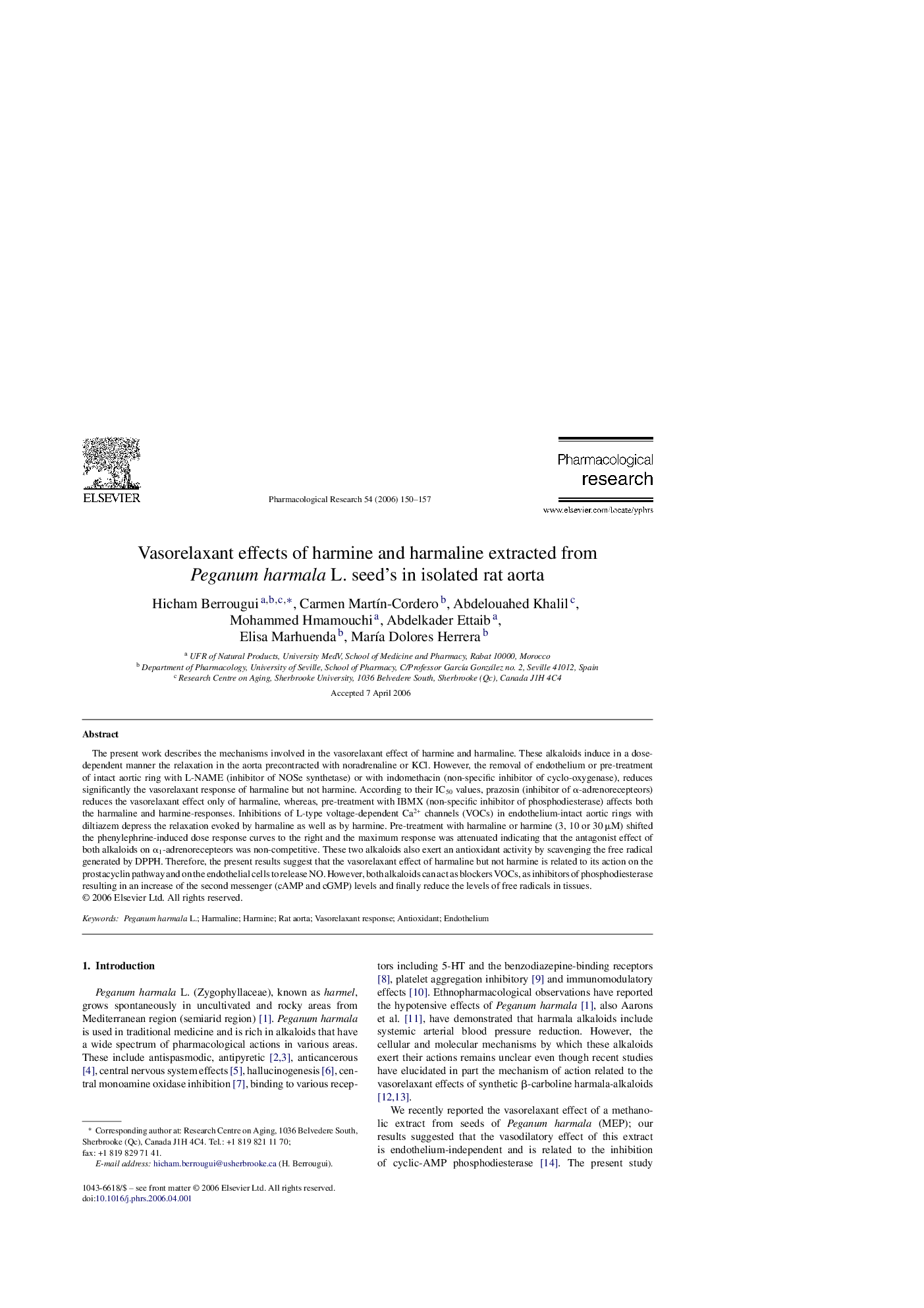| Article ID | Journal | Published Year | Pages | File Type |
|---|---|---|---|---|
| 2561607 | Pharmacological Research | 2006 | 8 Pages |
The present work describes the mechanisms involved in the vasorelaxant effect of harmine and harmaline. These alkaloids induce in a dose-dependent manner the relaxation in the aorta precontracted with noradrenaline or KCl. However, the removal of endothelium or pre-treatment of intact aortic ring with L-NAME (inhibitor of NOSe synthetase) or with indomethacin (non-specific inhibitor of cyclo-oxygenase), reduces significantly the vasorelaxant response of harmaline but not harmine. According to their IC50 values, prazosin (inhibitor of α-adrenorecepteors) reduces the vasorelaxant effect only of harmaline, whereas, pre-treatment with IBMX (non-specific inhibitor of phosphodiesterase) affects both the harmaline and harmine-responses. Inhibitions of L-type voltage-dependent Ca2+ channels (VOCs) in endothelium-intact aortic rings with diltiazem depress the relaxation evoked by harmaline as well as by harmine. Pre-treatment with harmaline or harmine (3, 10 or 30 μM) shifted the phenylephrine-induced dose response curves to the right and the maximum response was attenuated indicating that the antagonist effect of both alkaloids on α1-adrenorecepteors was non-competitive. These two alkaloids also exert an antioxidant activity by scavenging the free radical generated by DPPH. Therefore, the present results suggest that the vasorelaxant effect of harmaline but not harmine is related to its action on the prostacyclin pathway and on the endothelial cells to release NO. However, both alkaloids can act as blockers VOCs, as inhibitors of phosphodiesterase resulting in an increase of the second messenger (cAMP and cGMP) levels and finally reduce the levels of free radicals in tissues.
